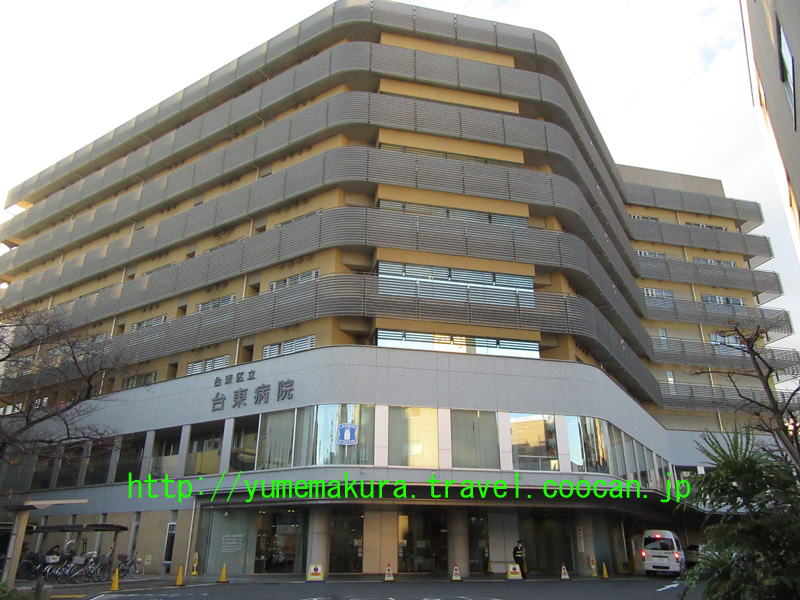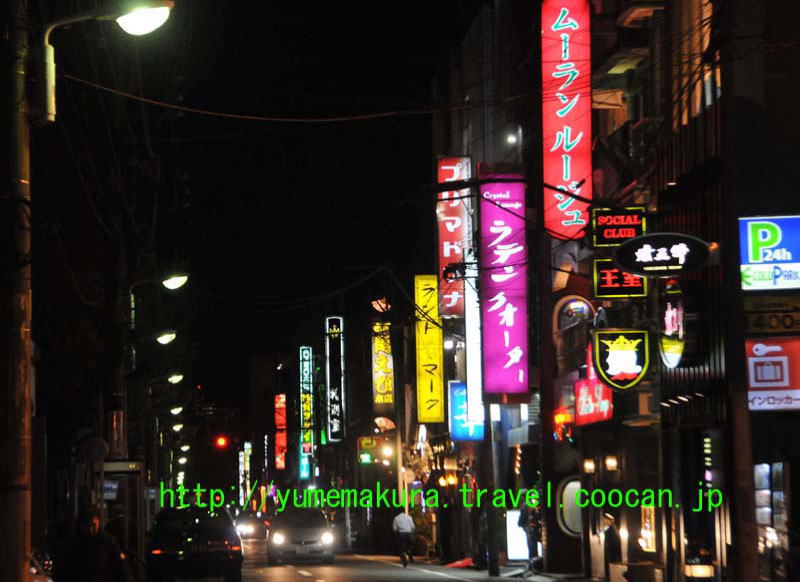
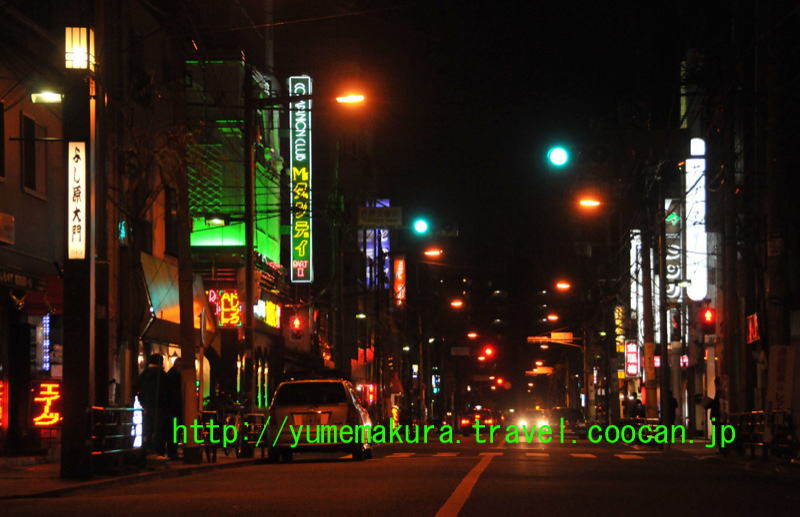
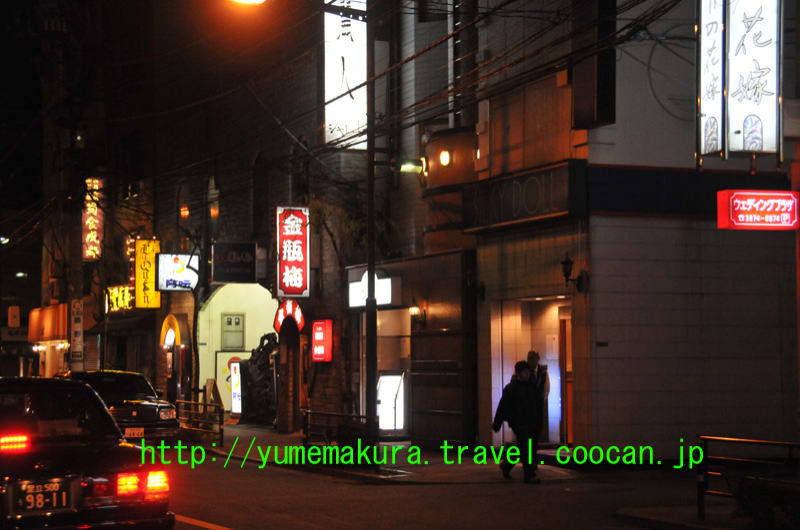
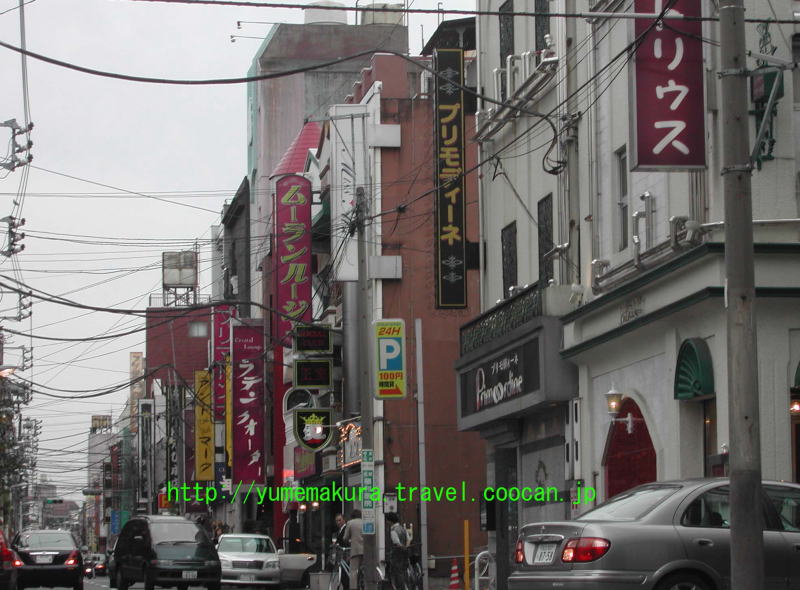
| Return to Top Page |
| Yoshiwara was the only red-light district approved by the Edo government (1603-1868),
and was set up in 1617 at what is now Ningyo-cho in Nihonbashi, Chuo-ku.
The name of Yoshiwara is said to originate from the fact that the town
was created by reclaiming a marsh area where ditch reed (yoshi) grew in
abundance. The Edo government executed the order to move the Yoshiwara red-light district to a suburban area due to the disastrous fire in 1657, and Yoshiwara was moved to the location of present-day Senzoku in Taito-ku (Senzoku-mura in Asakusa) in August the same year. The Yoshiwara in the new location was called "Shin-Yoshiwara" as opposed to "Moto-Yoshiwara" the original red-light district. Shin-Yoshiwara was extremely prosperous as one of the greatest entertainment district in Edo, becoming a part of the splendid Edo culture, and was the scene of many historical events, until it was abolished in 1958 with the establishment of the Anti-Prostitution Act. (Taito-ku Education Committee) After the Anti-Prostitution Act was enacted, Yoshiwara became a ghost town but by the advent of "Turkish Bath" as a new form of sex industry in Japan, the town revived and today Yoshiwara is known as the largest "Soap Land" district in Japan with 151 parlors. The name Turkish Bath was changed to Soap Land following protests in 1984 by Turkish people denouncing the use of the name for brothels. Address: 4 chome, Senzoku, Taito-ku Access: 10 minutes walk from Exit 3 of Minowa Station on Subway Hibiya Line/ Get off at Yoshiwara Omon Bus Stop of Metropolitan Buses 1. Ueno MatsuzakayaĖMinami Senju East Exit 2. East Exit of Ikebukuro StationĖKaminarimon Asakusa |
Yoshiwara Today




Yoshiwara during the Meiji Era (1868-1912)
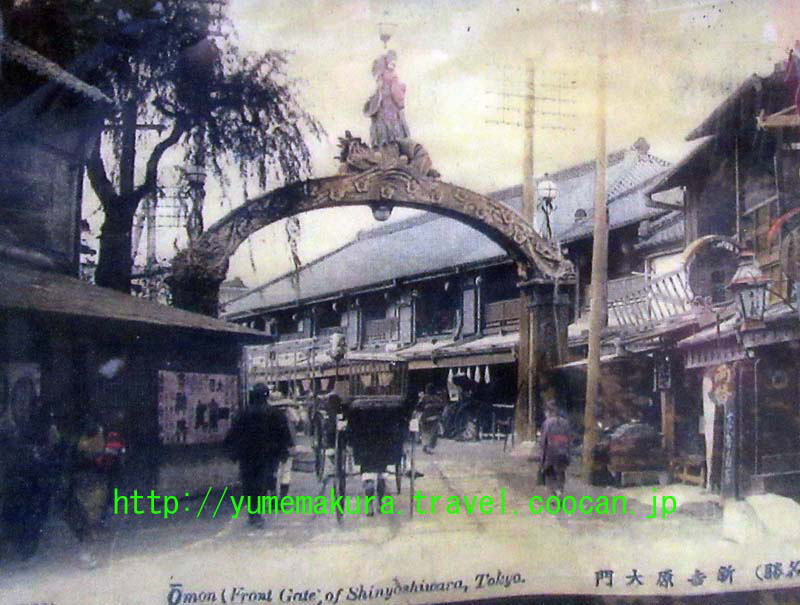
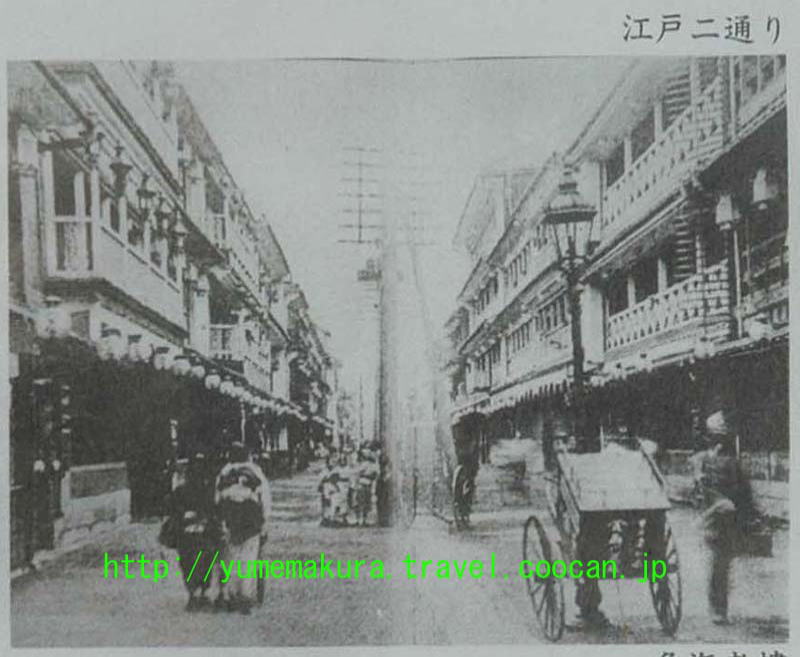
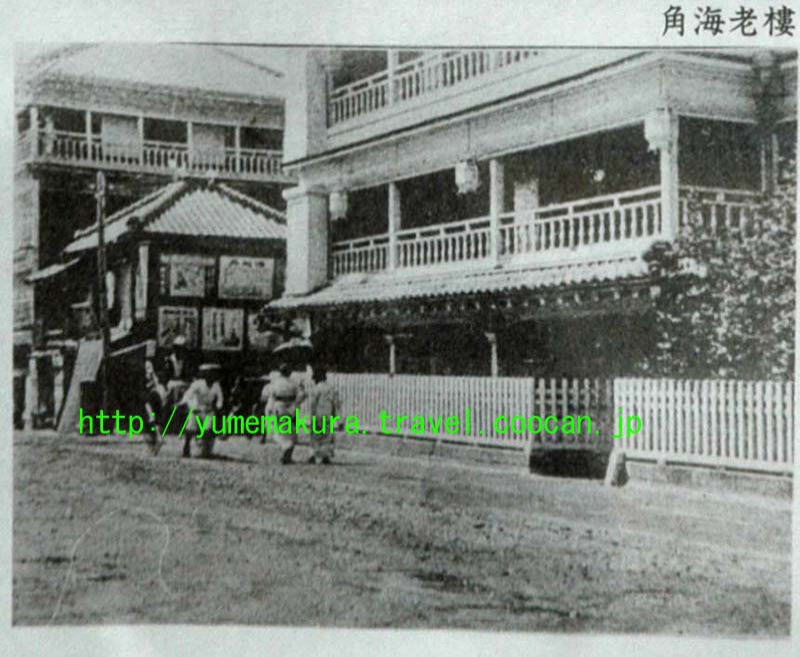
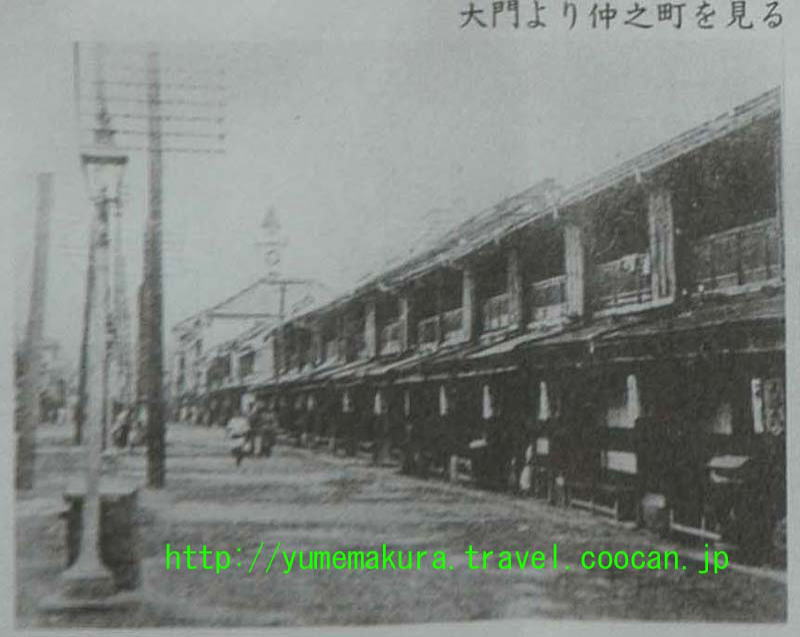
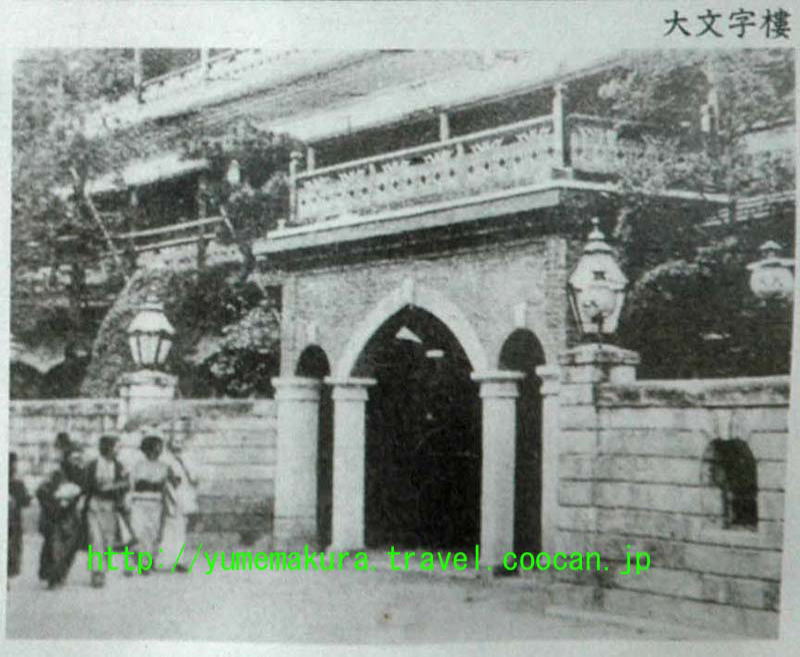
Oiran Dochu
| One of the grand spectacles of Yoshiwara was the oiran dochu, a parade
of the high-class courtesans which moved in stately splendor through the
main street of the quarter to attract customers. Ordinary townsmen and
visitors from the countryside flocked to Yoshiwara to view the spectacle
parade of Oiran in old days. Accompanying the courtesans as maids were
little girls called kamuro styled after the young female pages who attended
the court nobles. The event was restored and reenacted in 2002 by the efforts of the locals and amateurs, and today many spectators visit the festival every year in April. (See also April Page ) Address: The Oiran Dochu is held along the Komatsubashi Dori Street, Senzoku 4-Chome, Taito-ku Access: 10 minutes walk from Asakusa Station on Subway Ginza Line/ 8 minutes walk from Asakusa Station on Tsukuba Express/ Metropolitan Bus Asakusa 4-Chome Bus Stop Telephone: 03-3839-5229 (Executive Committee)/03-5246-1021 (Taito-ku Information Office) |
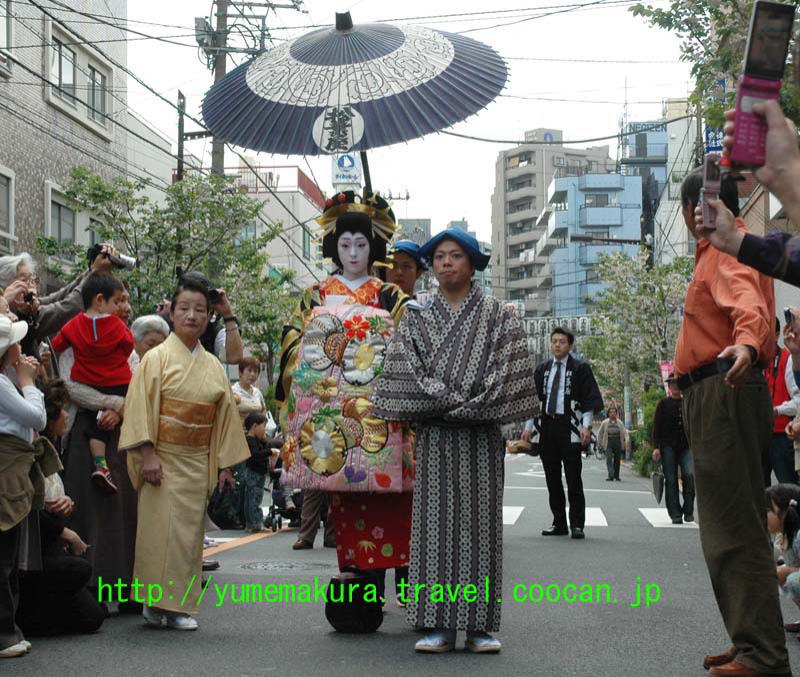
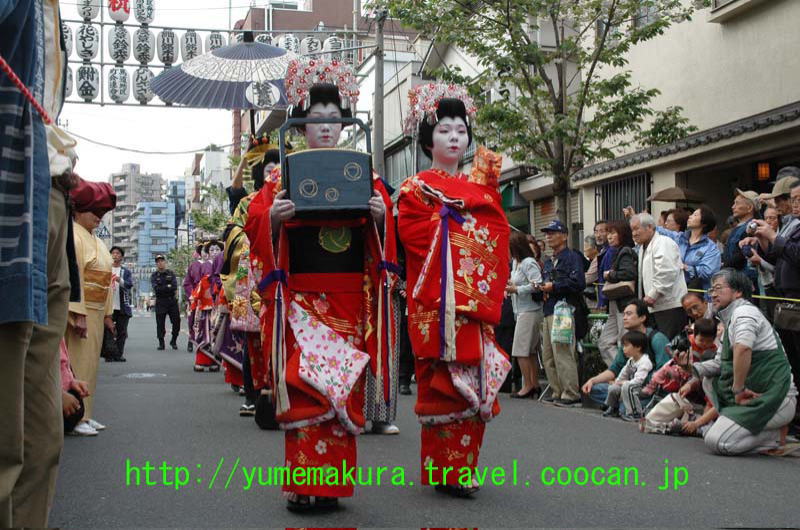
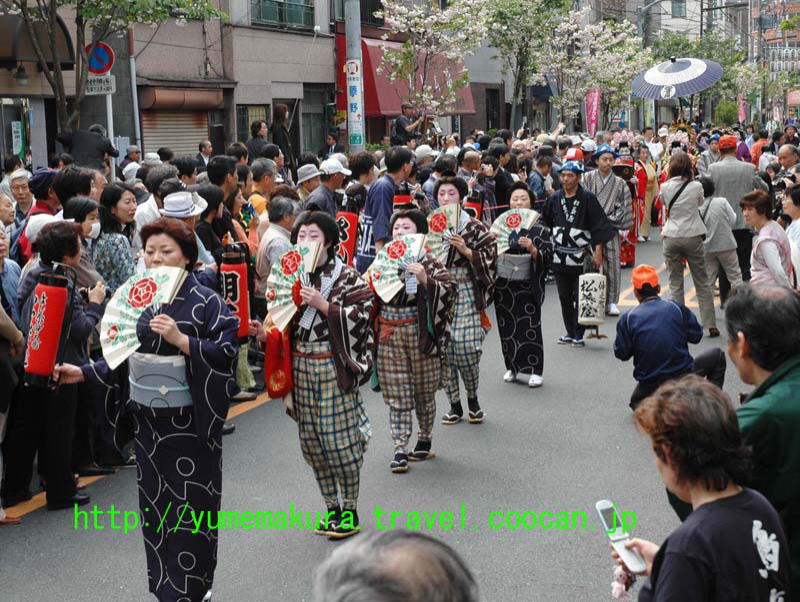
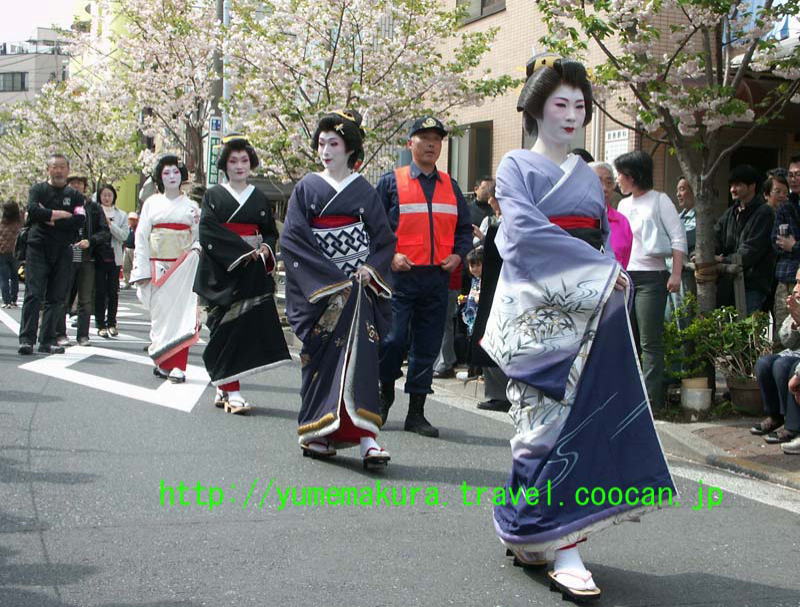
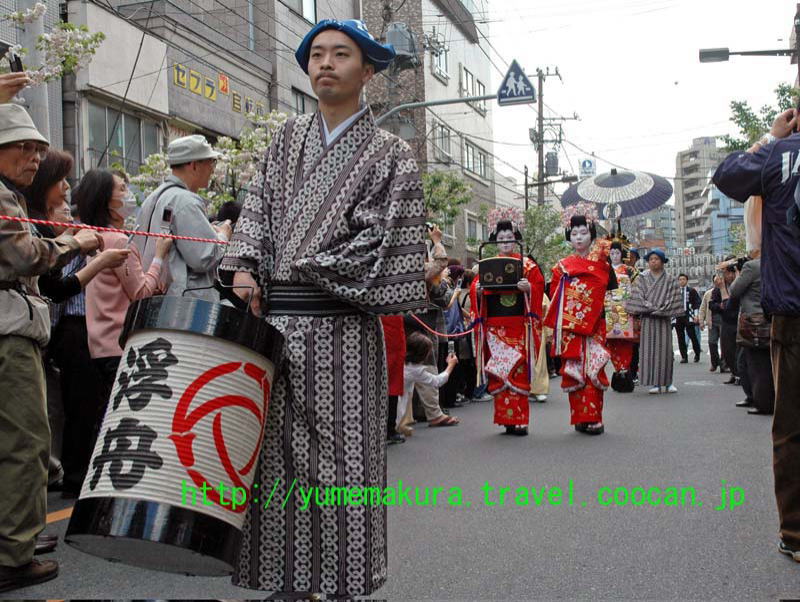
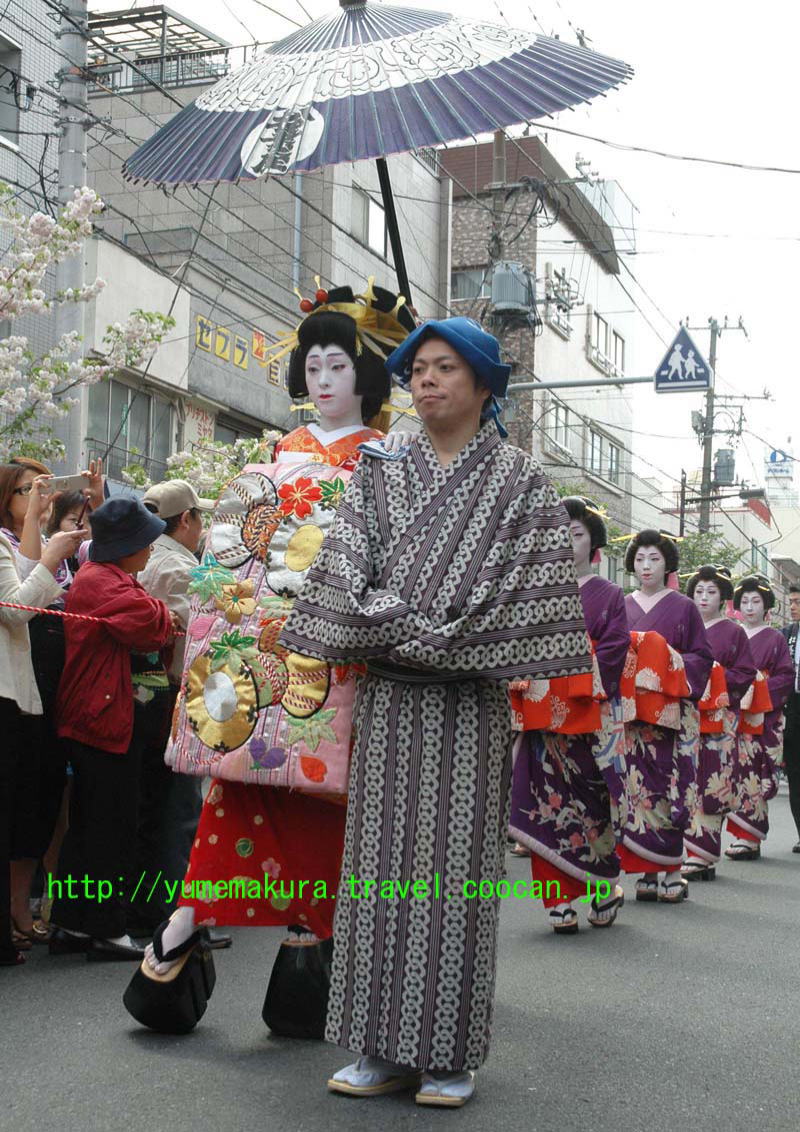
Oiran Dochu in the Meiji Era (1868-1912)
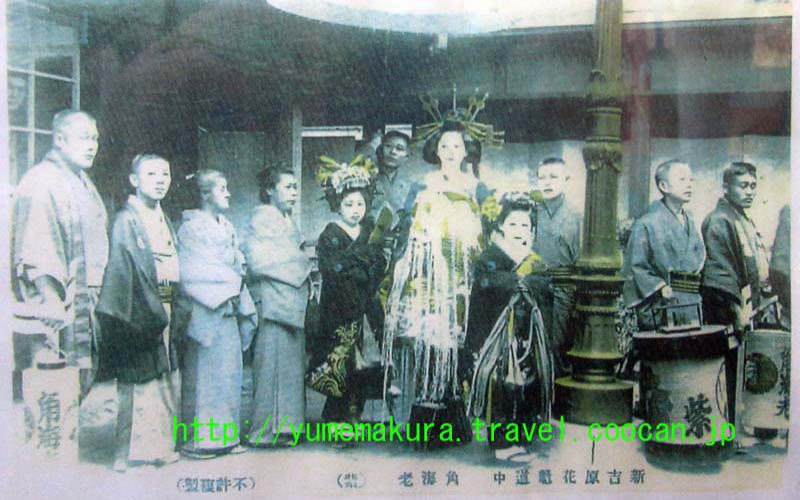
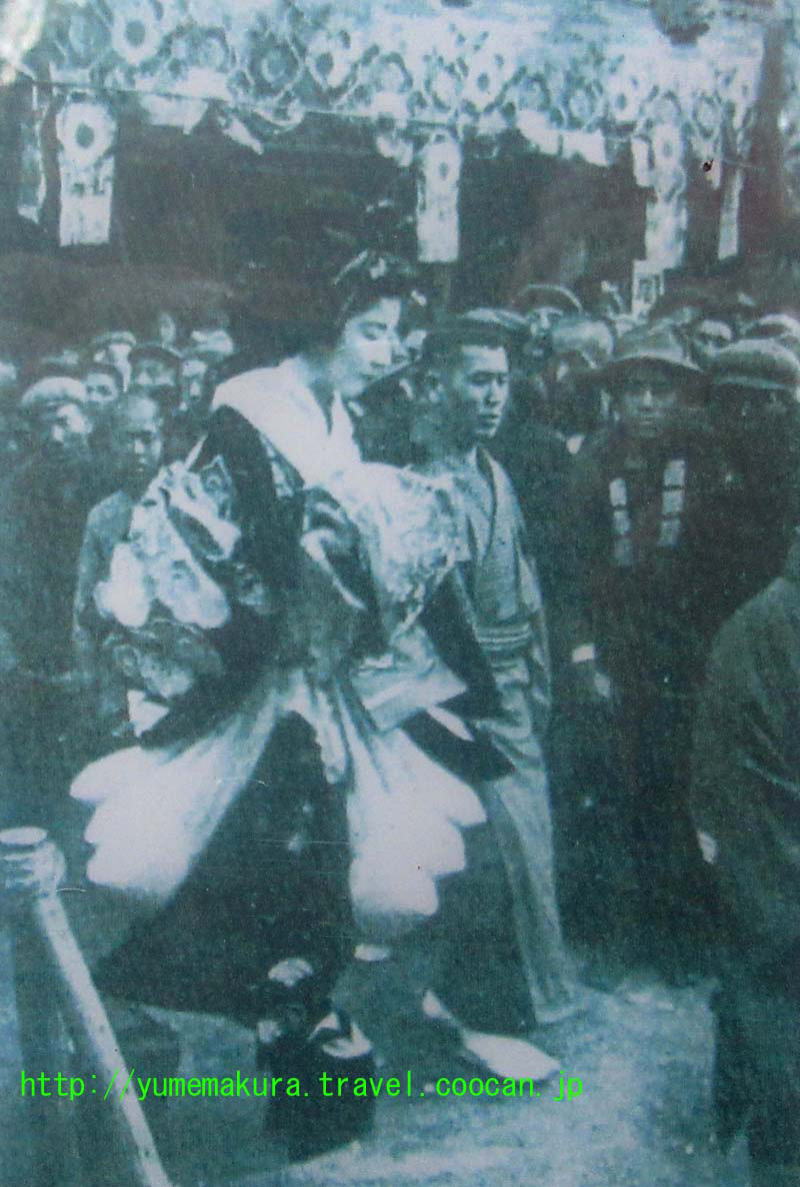
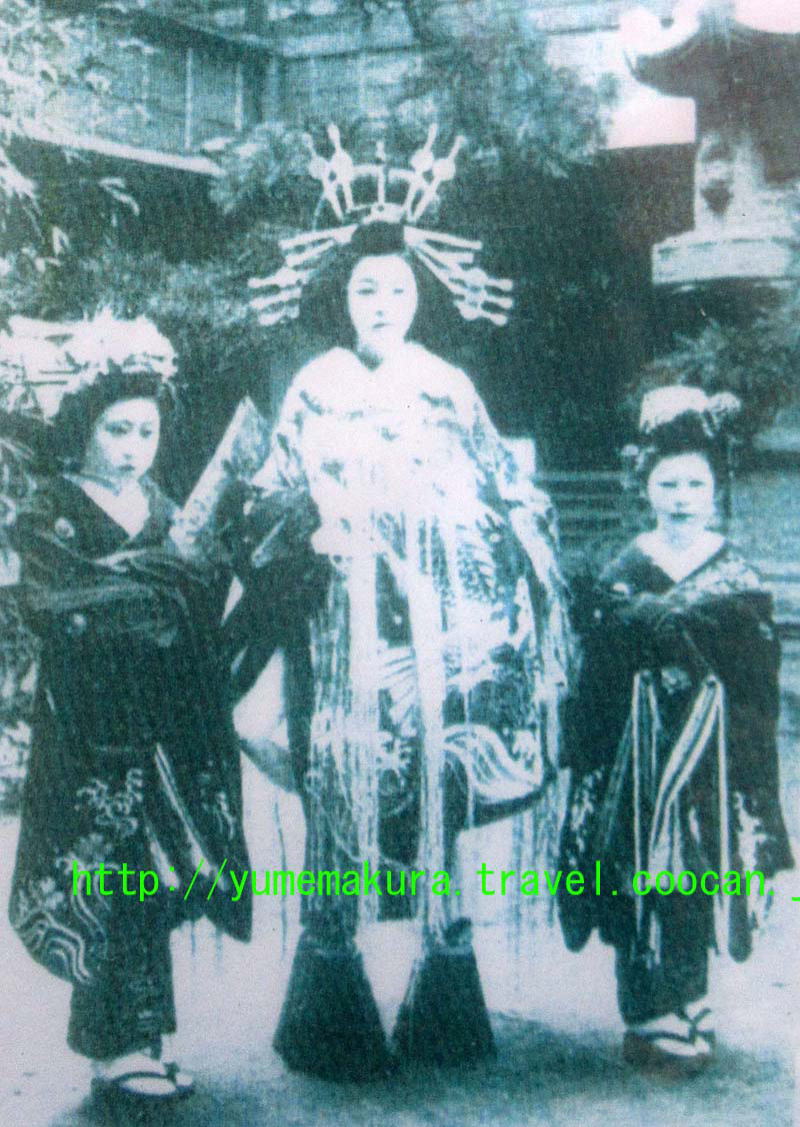
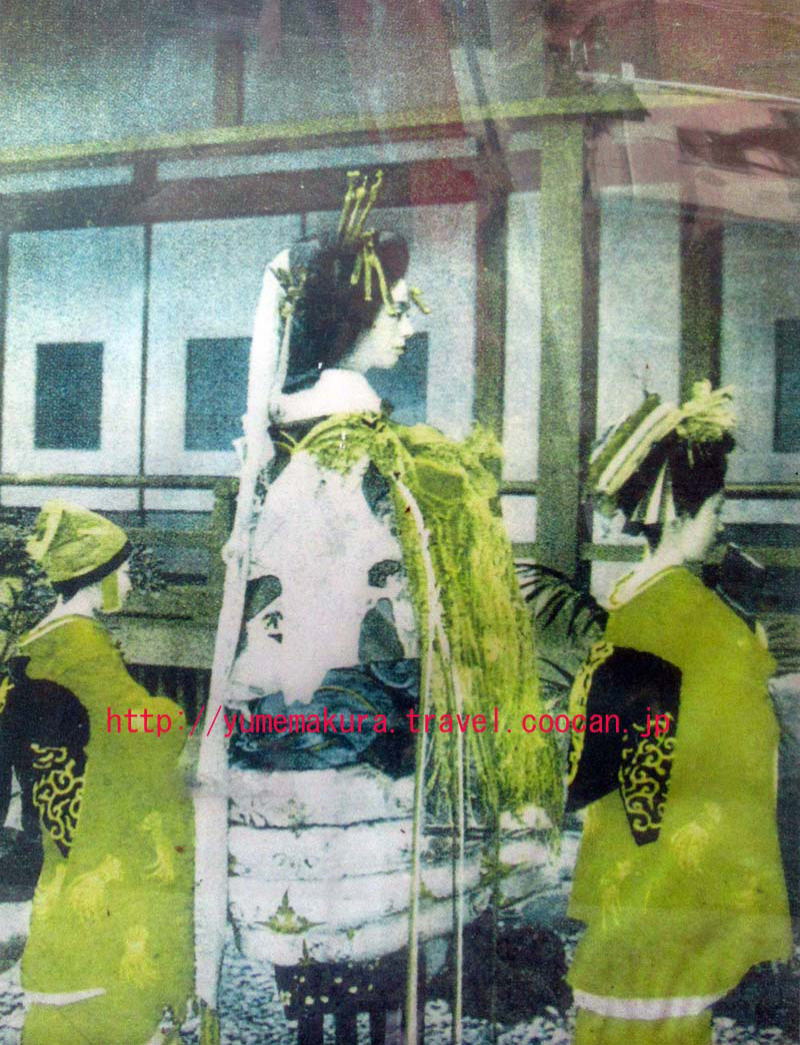
Yoshiwara Shrine
| Yoshiwara Shrine is the central shrine of Yoshiwara Benzaiten and five Inari shrines of
Yoshiwara which today do not exist. Yoshiwara Benzaiten is located in one
minute walk distance from Yoshiwara Shrine. Every year, the festivals of
Yoshiwara Shrine is held on the 3rd Friday, Saturday and Sunday in May.
URL: Yoshiwara Shrine Address: 20-2 Senzoku 3-chome, Taito-ku Access: 15 minutes walk from Iriya Station on Subway Hibiya Line/ 2 minutes walk from Senzoku 3-chome Bus Stop of Kita Megurin Bus (Taito-ku Circulation Bus from Asakusa running every 15 minutes) Telephone: 03-3872-5966 (Yoshiwara Shrine) |
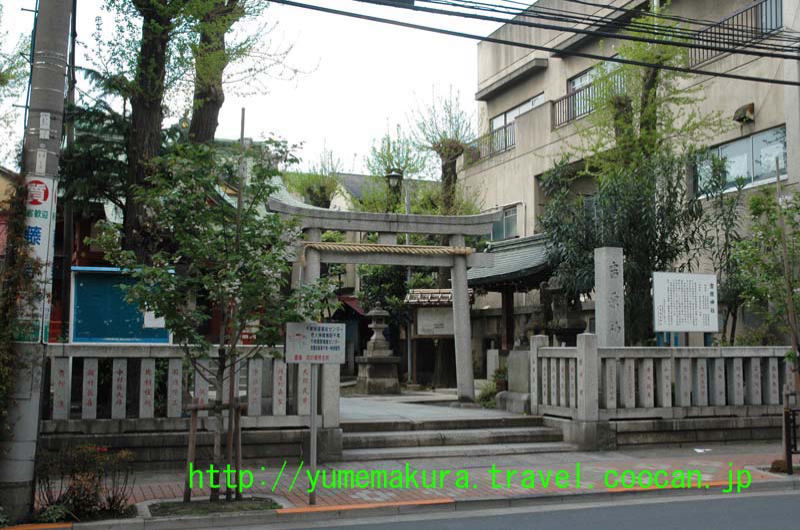
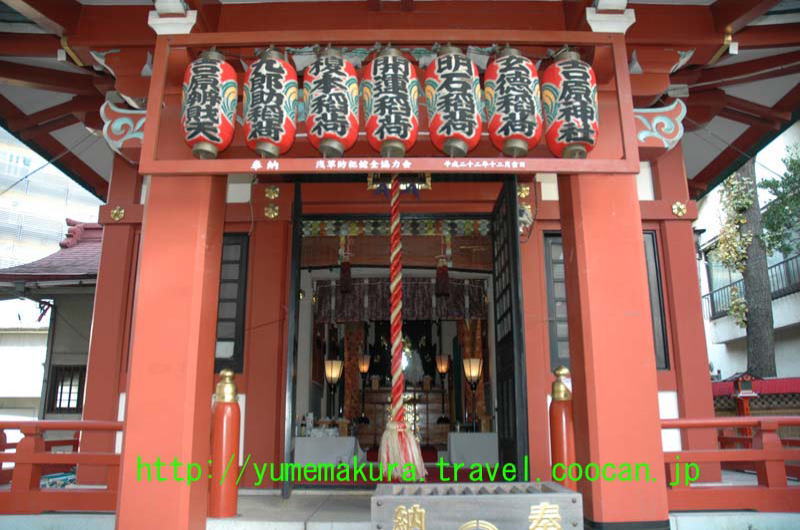
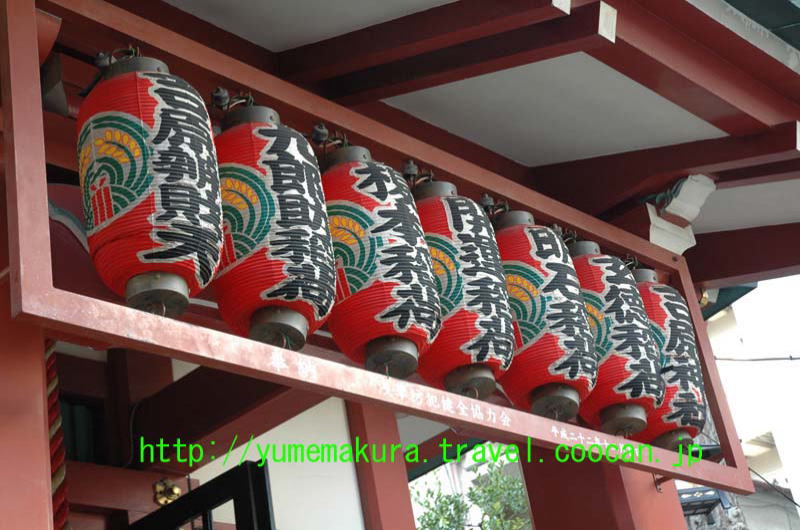
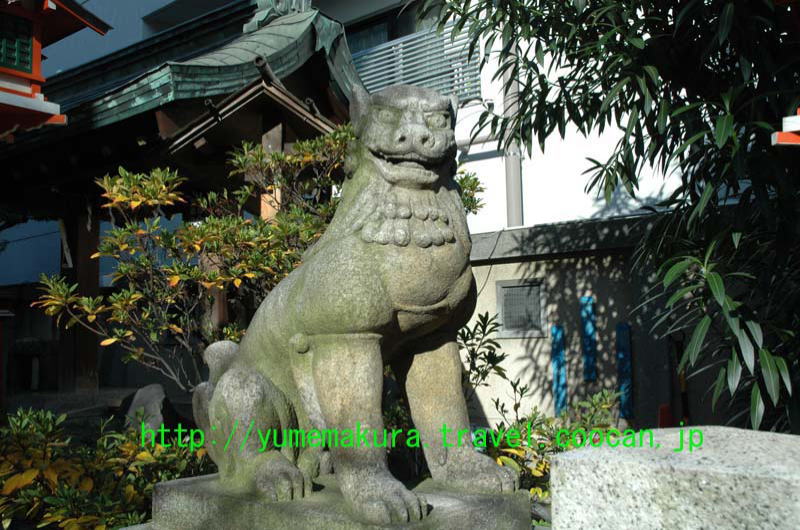
Yoshiwara Benzaiten
| Until the early 17th Century, the area was marshland with many lakes. In
1657, the wetland was reclaimed and the pleasure district, Shin-Yoshiwara,
was established. This pond was left alone and from a certain period, Benten
Shrine was worshipped on its shores. Presently, this Benten Shrine is considered
one of the shrines on the Seven Lucky Gods of Good Fortune (Shichi Fukujin)
in Asakusa and many come to worship it on New Year's. The pond was called
the Hanazono Pond or the Benten Pond. In the Great Kanto Earthquake of 1923 many people sought refuge by its shores and 490 of them perished. The giant statue of the Bodhisattava Avalokiteshvara near the Benten Shrine was built in 1926 in memory of their souls. Most of the pond was filled up in 1959 when the NTT Yoshiwara Building was constructed and now only traces of it remain. (Taito-ku Education Committee) URL: Yoshiwara Benzaiten Address: 3-22 Senzoku, Taito-ku Access: 15 minutes walk from Iriya Station on Subway Hibiya Line/ 2 minutes walk from Senzoku 3-chome Bus Stop of Kita Megurin Bus (Taito-ku Circulation Bus from Asakusa running every 15 minutes) Telephone: 03-3872-5966 (Yoshiwara Shrine) |
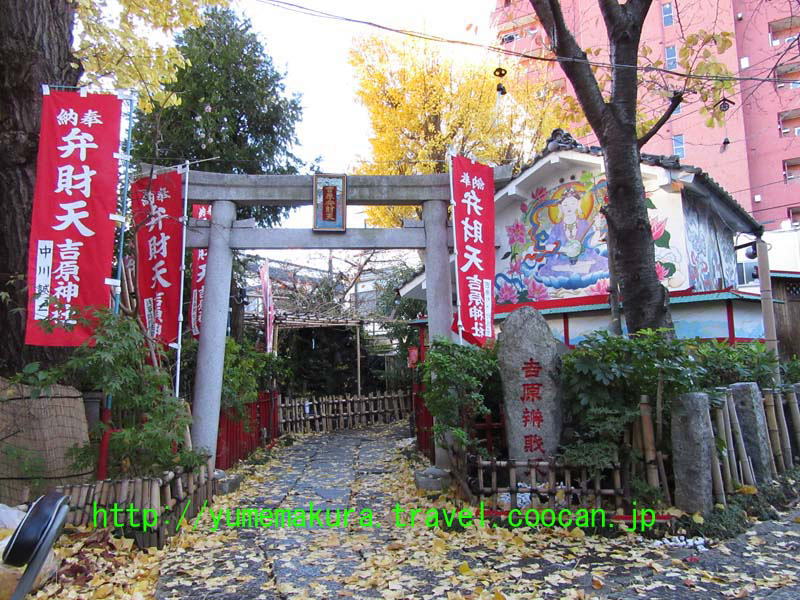
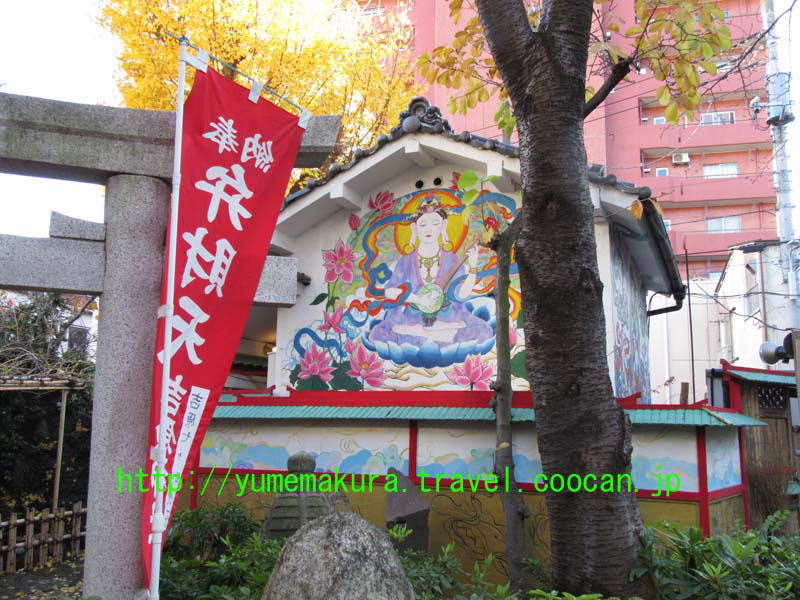
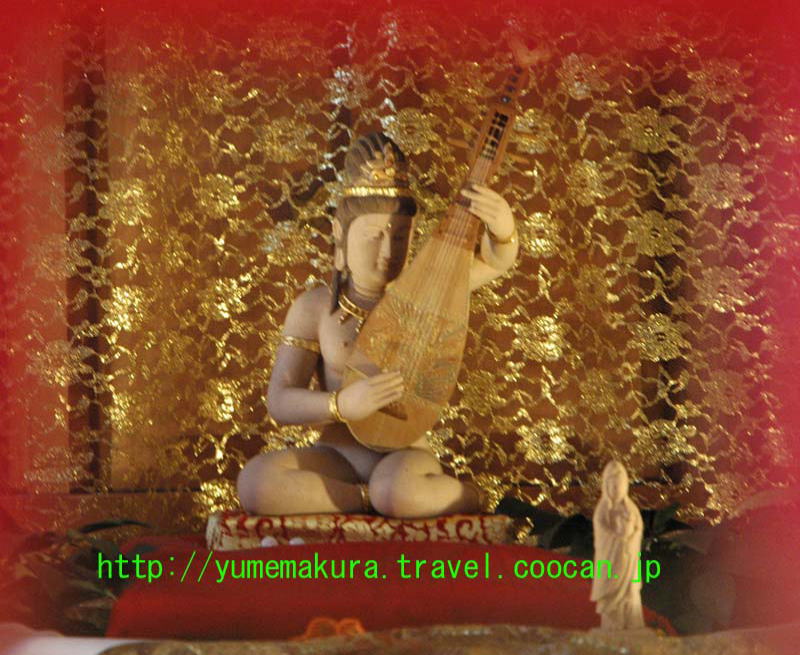
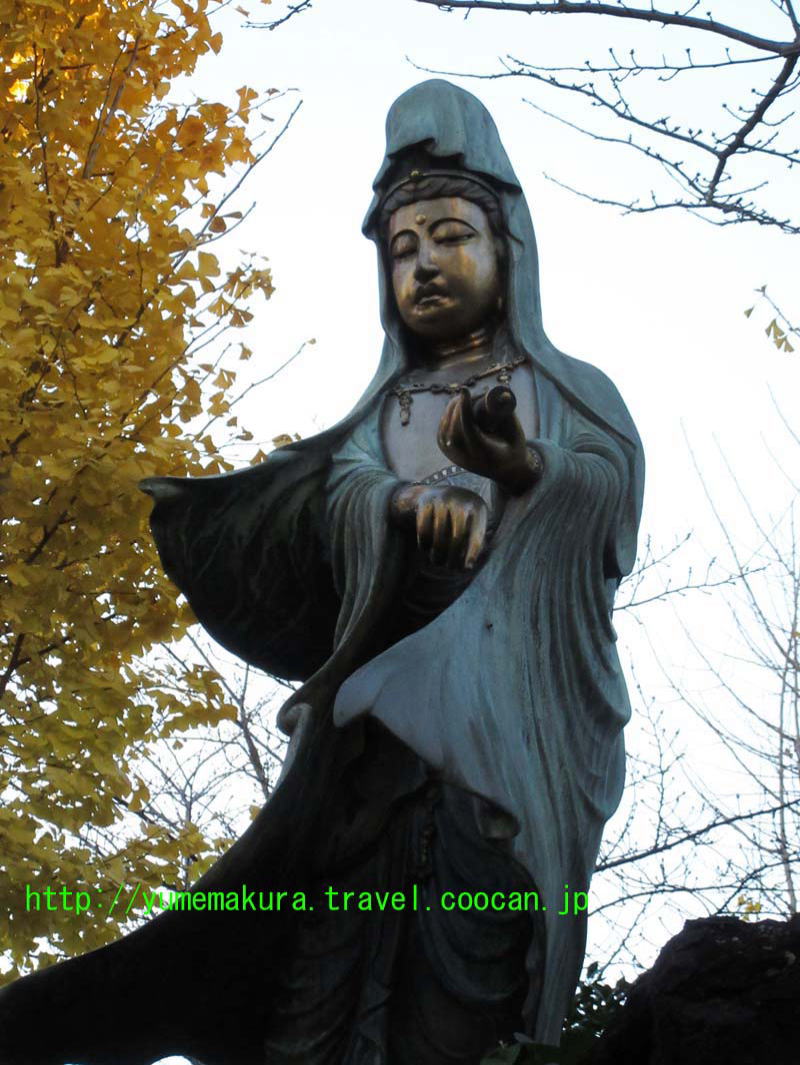
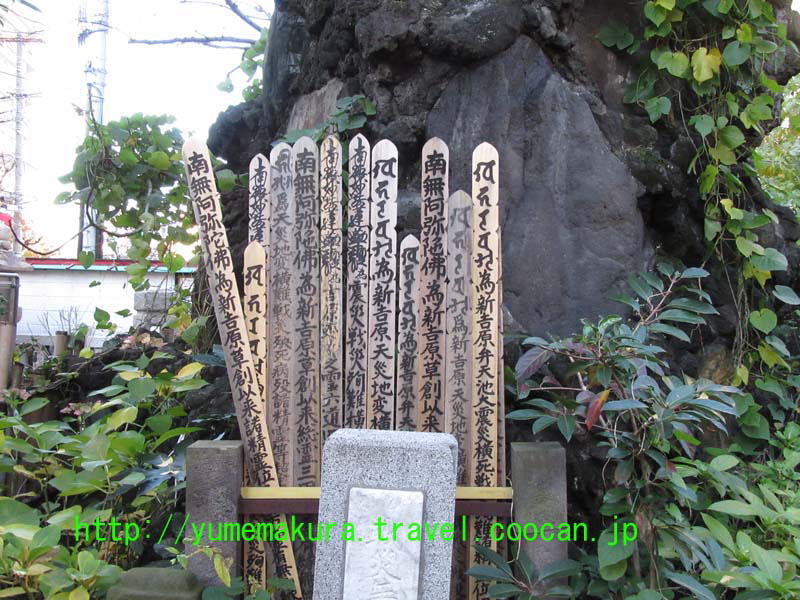
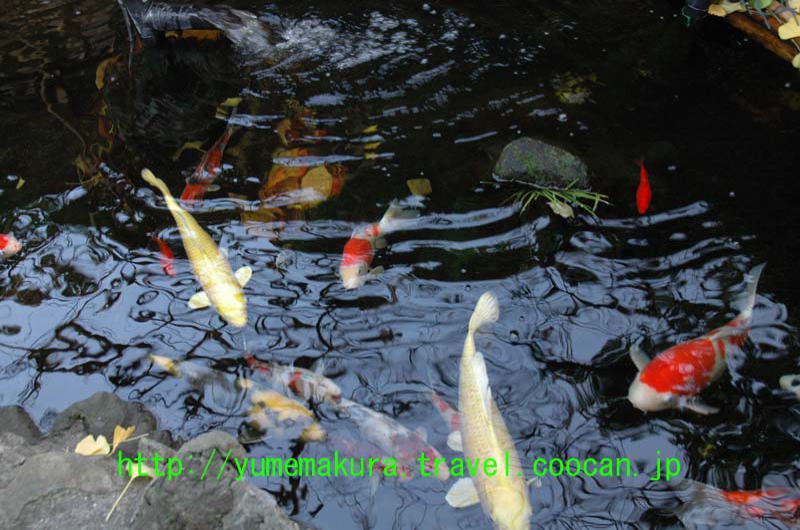
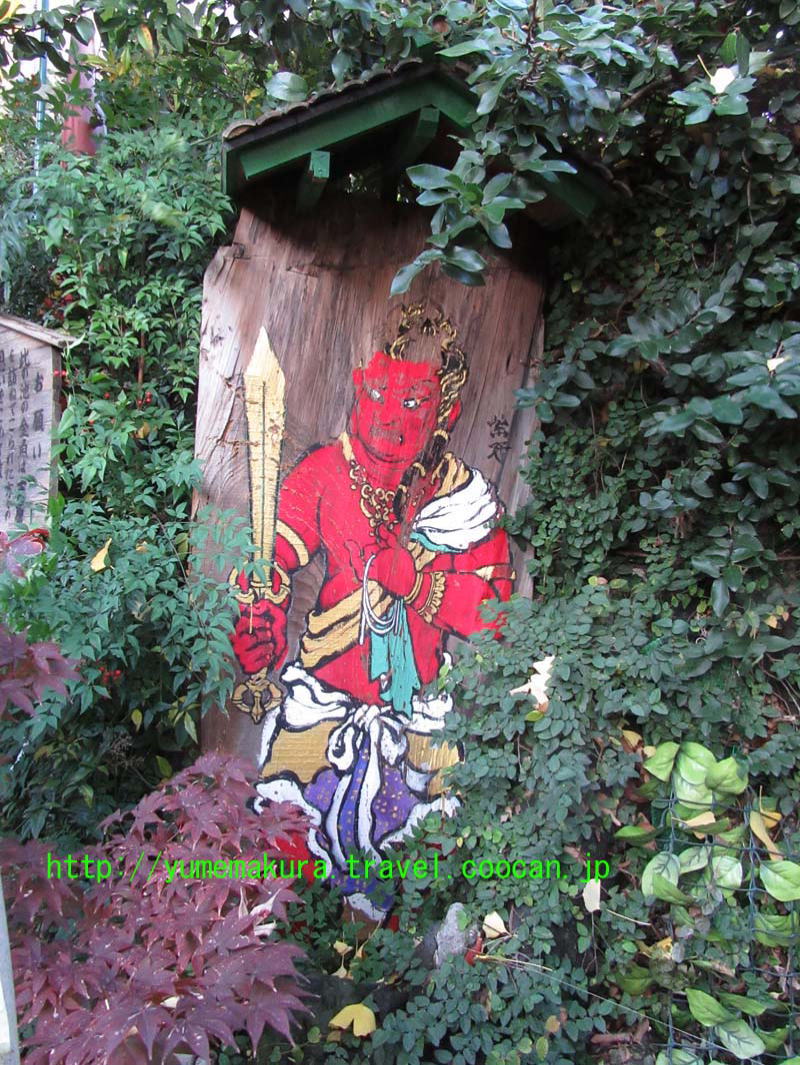
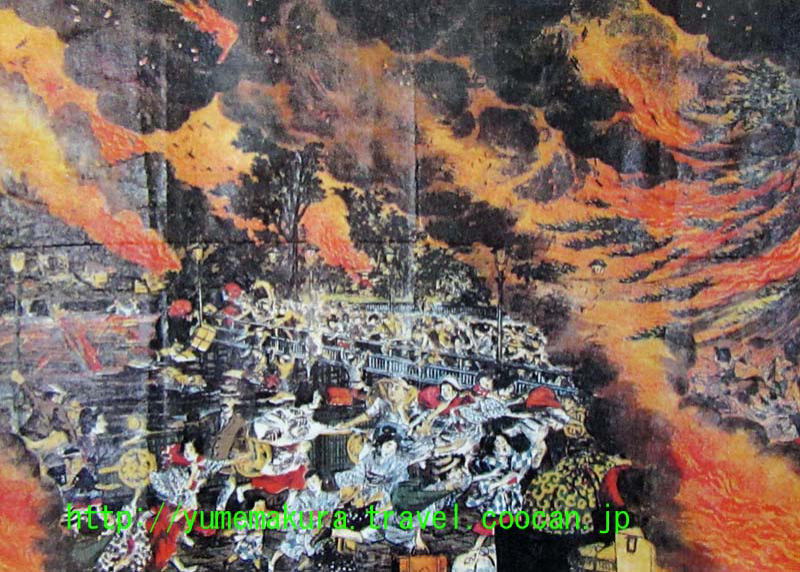
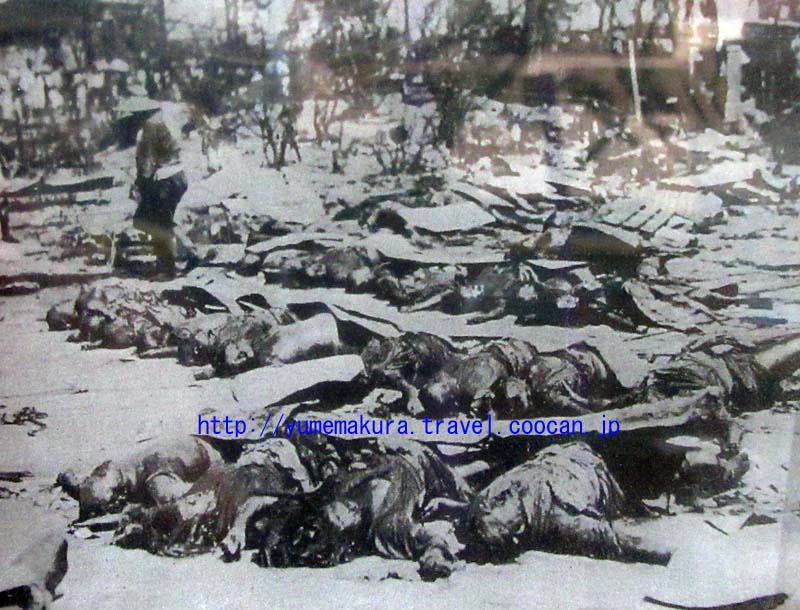
Jokanji Temple (Nagekomidera)
| Jokanji Temple in Arakawa-ku near Minowa Station on subway Hibiya Line
is known as "Nagekomidera" (a temple where unidentified or unclaimed
bodies of travellers and prostitutes were buried) . Here many women of
Yoshiwara who died in the big earthquake of Ansei in 1855 are buried. URL: http://www.jyokanji.com/ Address: 2-1-12 Minami Senju, Arakawa-ku Access: 2 minutes walk from Minowa Station on Subway Hibiya Line Telephone: 03-3801-6870 |
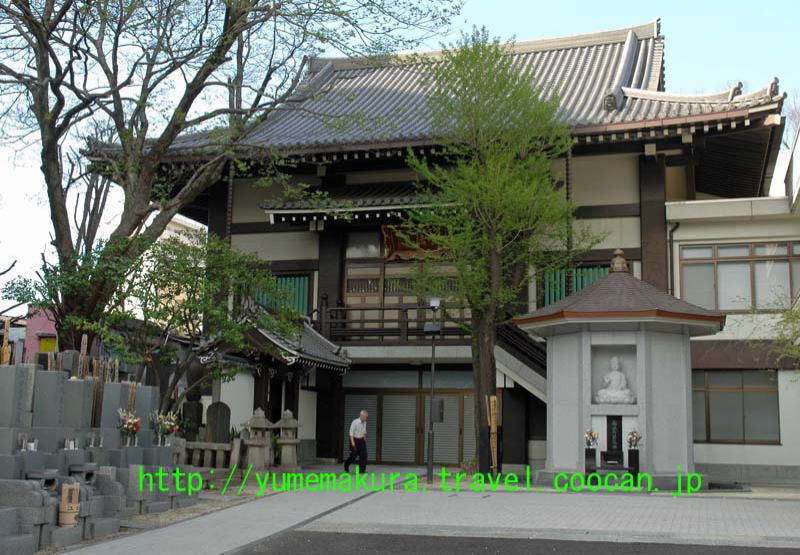
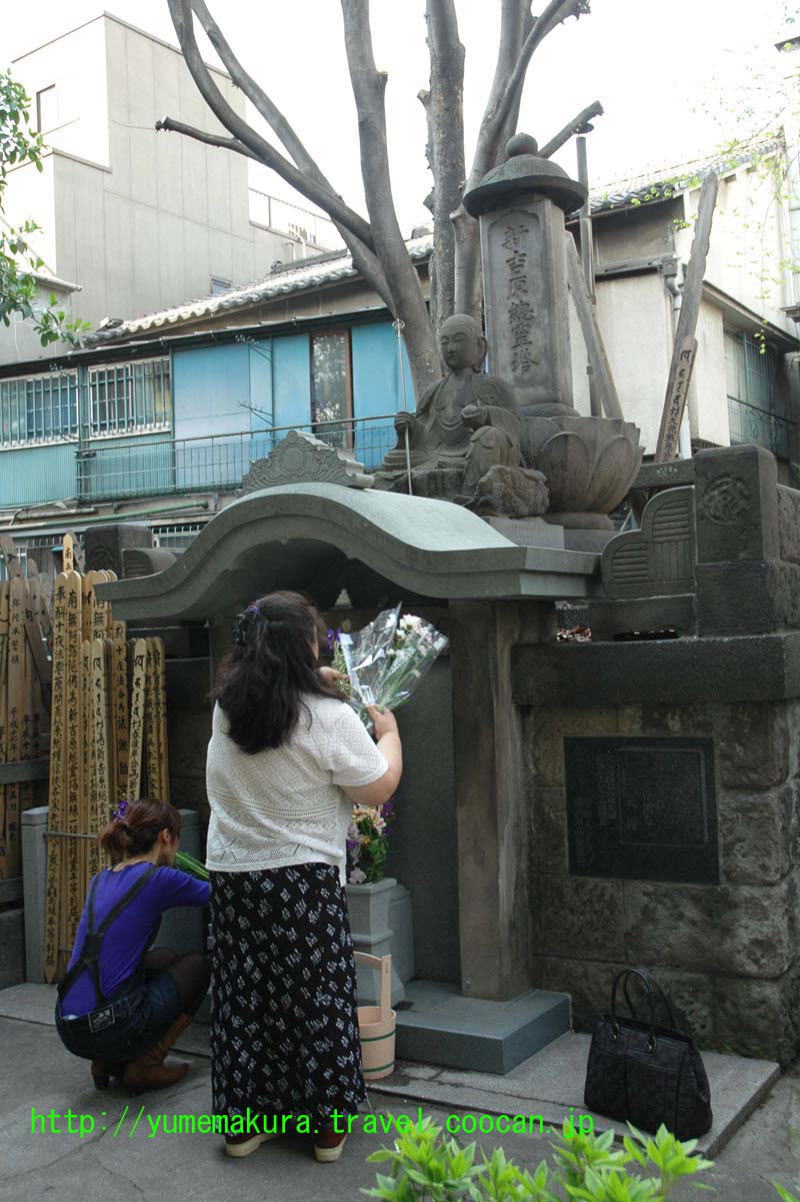
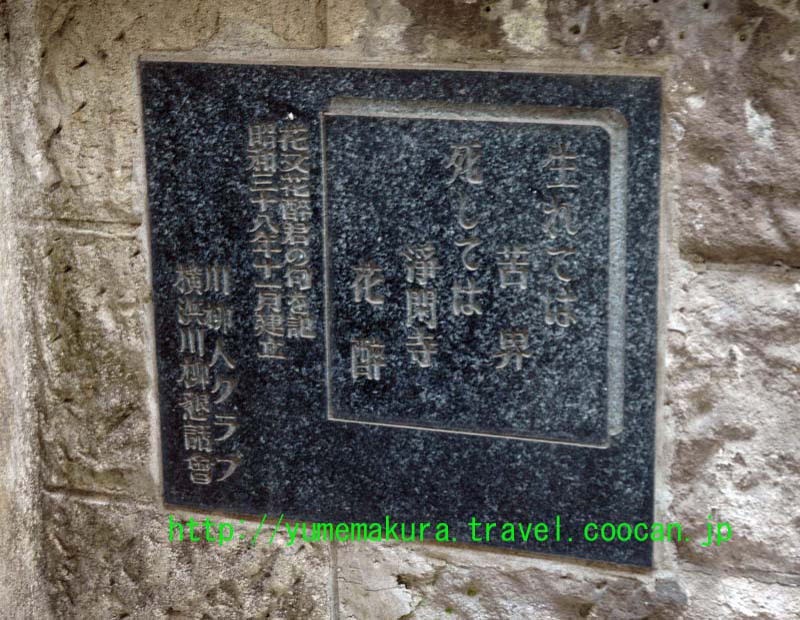
Ichiyo
| Ichiyo Higuchi (1872-1896) is the most prominent female writer in the Meiji period (1868-1912). Specializing
in short stories of about 20 treating primarily the unhappy and circumscribed
lives of young women of her days. In 1893, Higuchi, her mother and her
sister after losing their father in 1889 abandoned their middle class house
with a grim determination to survive, moved to a poor neighborhood. Their
new dwelling at Ryusen was a five-minute walk from Tokyo's ill famed red-light
district, the Yoshiwara. Her experience living in this neighborhood provided
materials for several of her later stories, especially "Takekurabe"
(Child's Play). She died on November 23, 1896 at the age of 24. In 2004, she appeared on the face of \5,000 note. Ichiyo Memorial Museum was built in 2006 at the same place where the old museum existed and manuscripts and letters by herself are exhibited. URL: Ichiyo Memorial Museum Address: 18-4, Ryusen 3-chome, Taito-ku Access: 10 minutes walk from Minowa Station on Subway Hibiya Line Telephone: 03-3873-0004 |
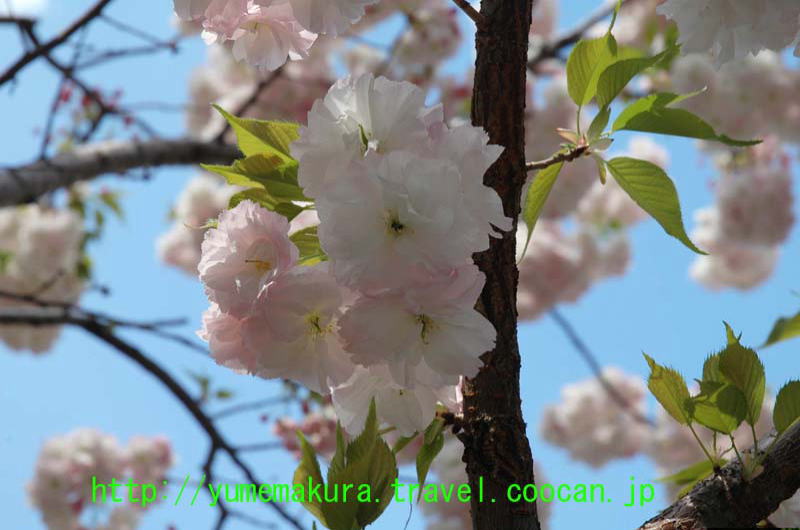
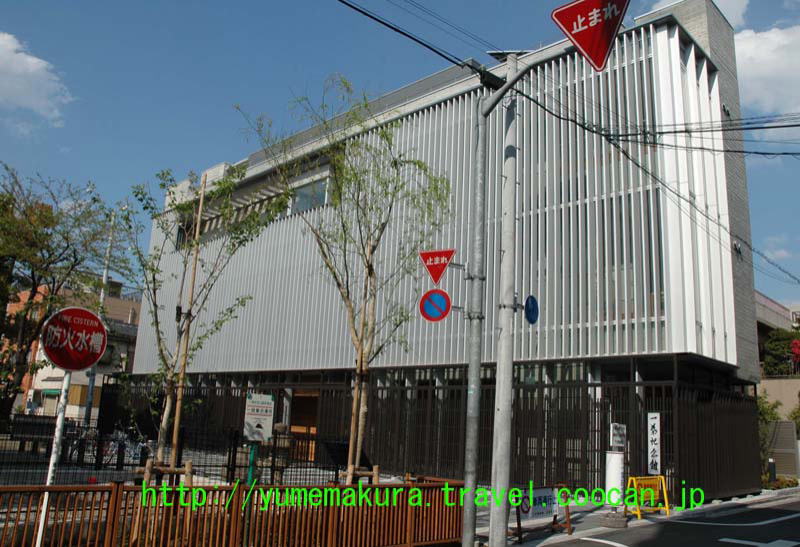
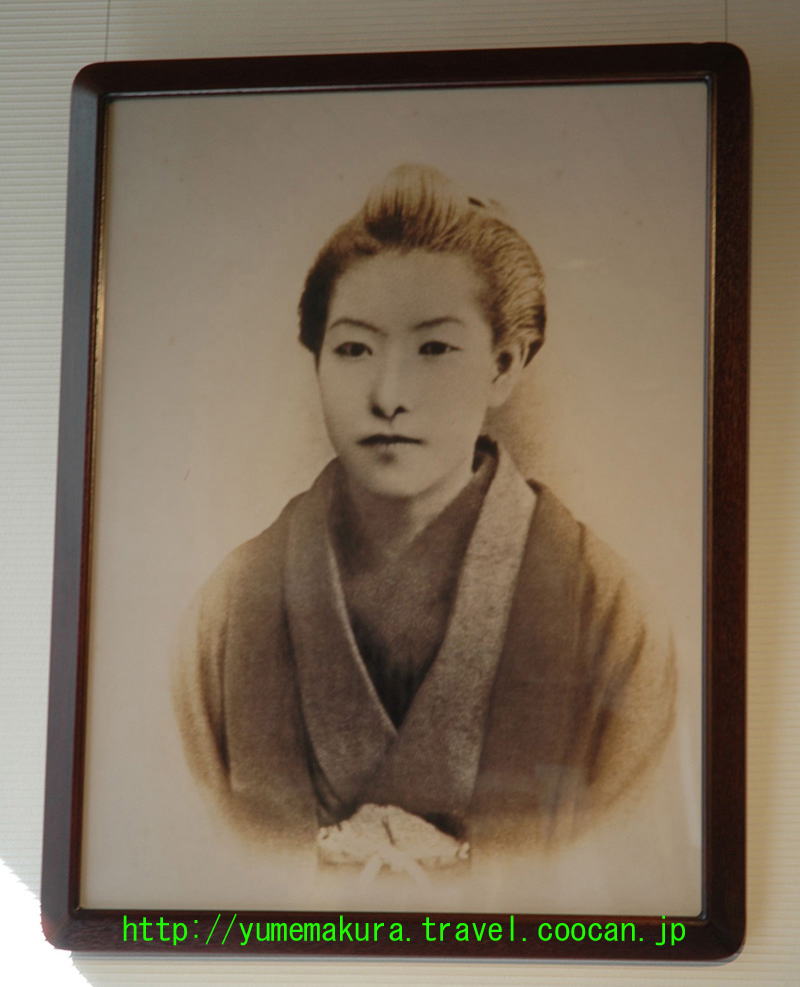
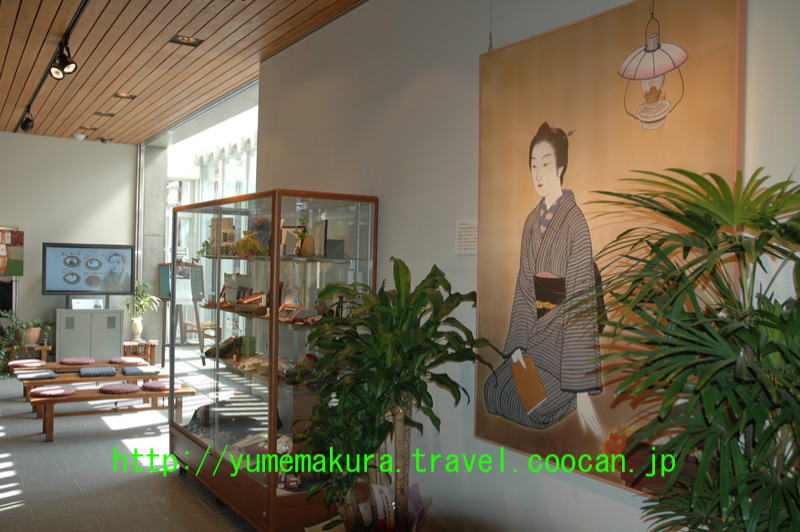
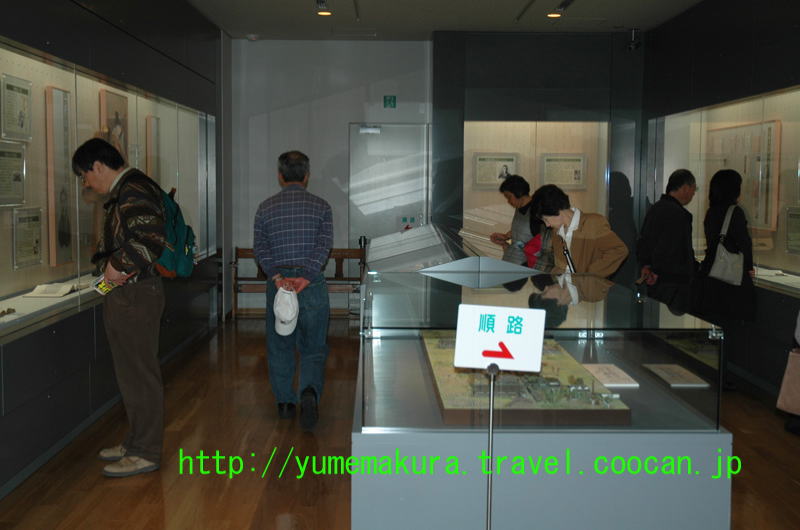
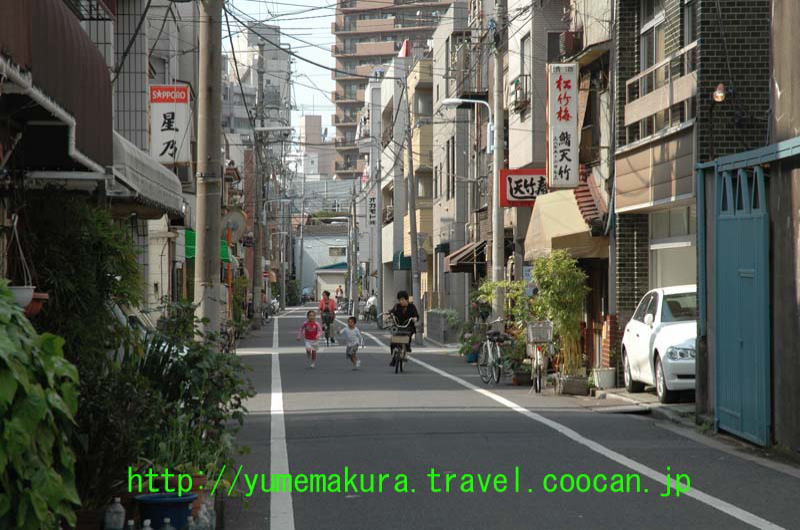
Otori Shrine
| Otori Shrine is located close to Yoshihara red-light district. The shrine's
Tori-no-Ichi in November is a famous festival and it is said women at Yoshiwara
were allowed only on Tori-no-Ichi days to go outside the Yoshiwara to visit
the festival of the shrine. See Tori-no-Ichi URL: Otori Shrine Address: 18-7 Senzoku 3-chome, Taito-ku Access: 7 minutes walk from north exit 3 of Iriya Station on Subway Hibiya Line Telephone: 03-3876-0010 |
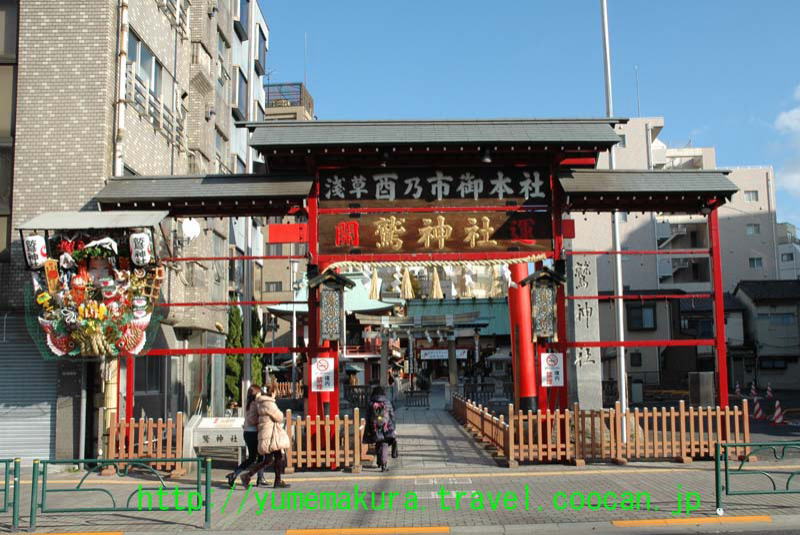
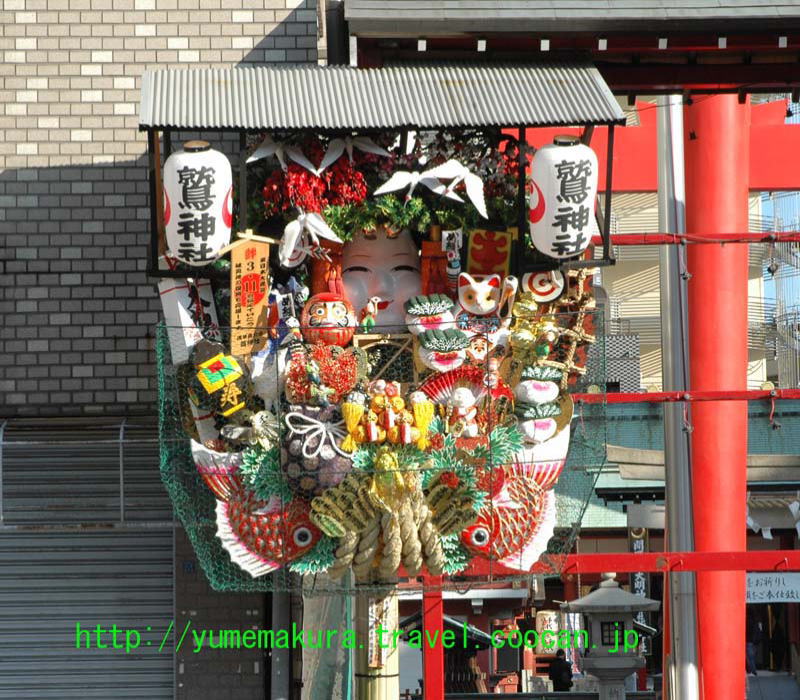
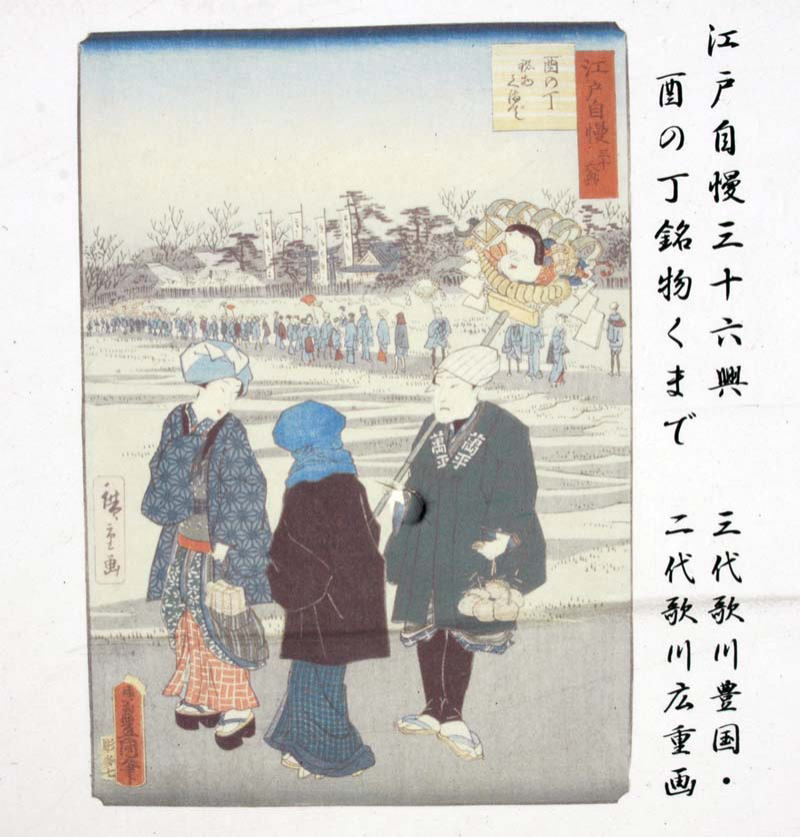
| Sakuranabe Nakae a horse meat restaurant is located across the street the main gate of
Yoshiwara Omon. The restaurant has a history of more than 100 years opening
in 1905. During the Meiji period, there were many horse meat restaurants
of more than 30 around Yoshiwara red-light district. The restaurants were
busy day and night by visitors to Yoshiwara who believed horse meat promises
stamina to its frequenters. Horse meat restaurant at Yoshiwara today is
only Nakae. The building rebuilt in 1924 after the Great Kanto Earthquake
miraculously survived the air raids of W.W. II and was designated as cultural
asset in 2010 by Agency for Cultural Affairs of Japan. Horse meat hot pot
is called "sakura nabe" for a reason that the color of fresh horse meat looks like the color of
sakura (cherry blossoms). URL: Sakuranabe Nakae URL: History of Nakae |
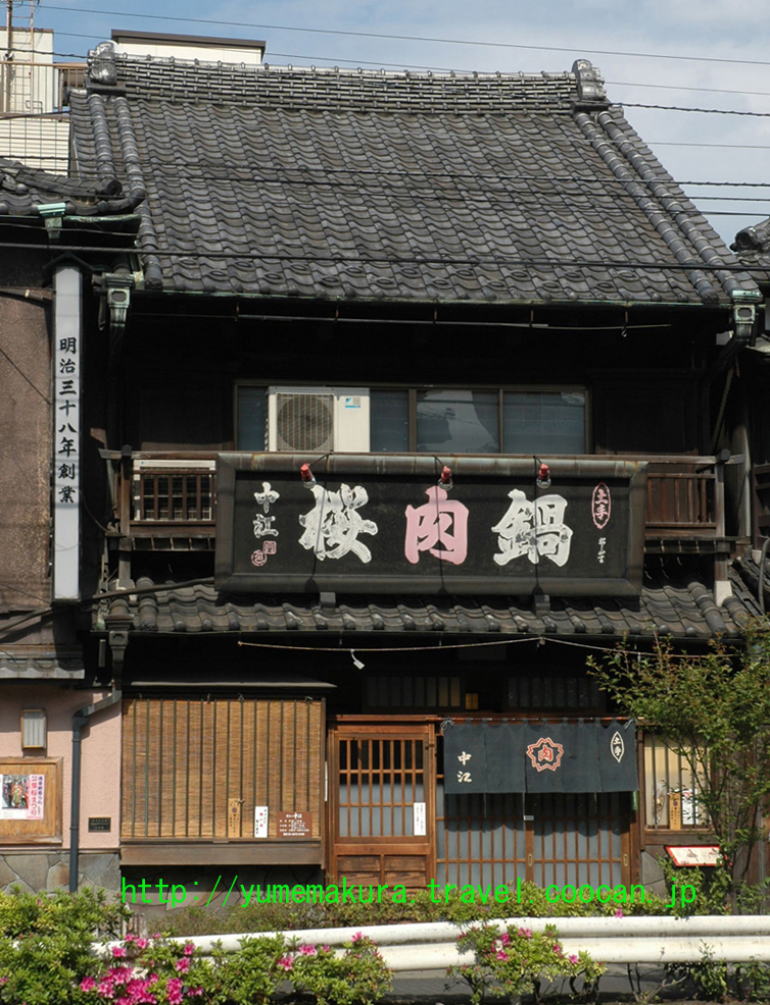
Yoshiwara Hospital
| Original Yoshiwara Hospital was built in 1911 as a hospital to treat venereal diseases of women who work in Yoshiwara and regular quarantines were conducted for them. In the first, the hospital was controlled by the Metropolitan Police Agency. Later, the Yoshiwara Hospital was tranferred to Tokyo Metropolitan Government in 1942 and became Metropolitan Yoshiwara Hospital and in 1959 the hospital changed the name to Taito Metropolitan Hospital. In 2004, Taito Metropolitan Hospital was abolished and in 2009, on the same ground, Taito Municipal Hospital was built. The hospital is managed by Taito-ku and is a regular hospital supporting the health of people in the local community of Senzoku and Taito-ku, a facility for the aged people adjoining. The hospital is located behind the Yoshiwara Shrine. |
Yoshiwara Hospital in the Meiji Era
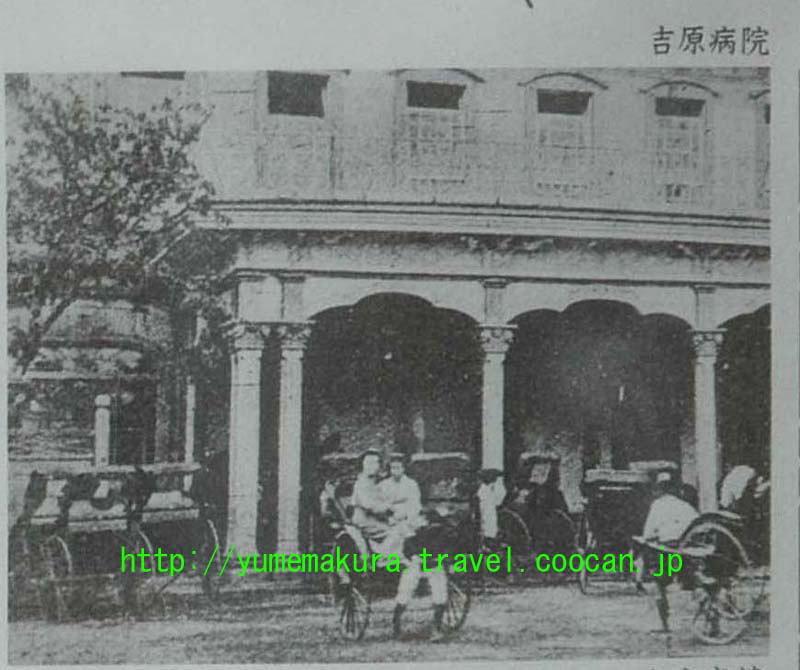
Taito Municipal Hospital
